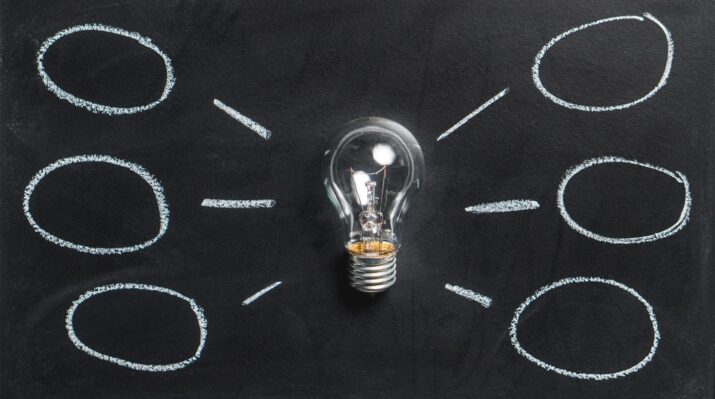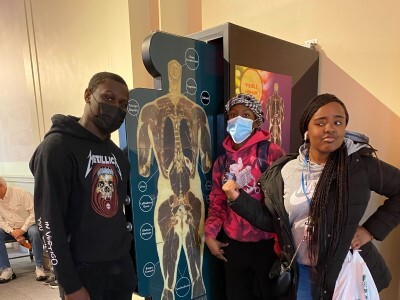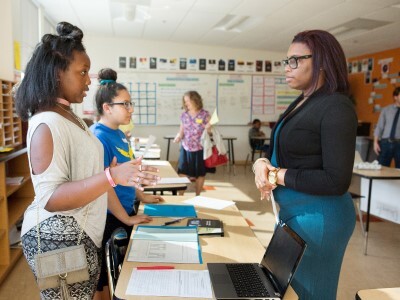Reimagining Assessment
6 Ways to Make Collective Feedback Work in Classrooms
Topics

Educators are rethinking the purposes, forms, and nature of assessment. Beyond testing mastery of traditional content knowledge—an essential task, but not nearly sufficient—educators are designing assessment for learning as an integral part of the learning process.
English teachers at Leadership Public Schools (LPS) found themselves facing a common question: how to give more, and better, feedback on writing in their classrooms?
In 2014, a few English teachers at Leadership Public Schools (LPS) found themselves facing a common question: how to give more, and better, feedback on writing in their classrooms? And how to do so in a way that built skills, encouraged growth, and honored their students’ needs to be college-ready in just a few years? The answers, it turns out, were the students themselves.
LPS teachers believed frequent, high-quality peer feedback would deepen student engagement, ownership of learning, and writing strength. Building on research out of UCLA, they designed the Collective Feedback Tool (CFT), a web-based tool that increases student meaning-making through writing, makes visible the feedback process, measures feedback effectiveness, and centers on a core of student voice and agency.
Peer feedback comes with significant challenges. Frequent facilitation is hard to sustain. Ensuring feedback is accurate and useful is even harder. Finding sufficient time for self-assessment and reflection to make meaning is perhaps hardest.
And yet over the past three years, LPS has expanded the Collective Feedback Tool pilot into multiple different subjects and has partnered with ed tech non-profit Gooru to build a free, web-based version. This process has taught us a lot about how to use collective feedback in classrooms as a lever for equity-driven formative assessment. Here are six lessons we learned.
- Create a culture of respect from day zero: Incoming 9th graders attend a leadership retreat before they start school, where they learn about core values and begin to build trust with their peers and the staff. Respect—for each other, for teachers and staff, for themselves—is paramount. It is reinforced every day, from the handshakes the Principal and teachers greet each student with each morning, to the all-school family meetings held once a week, to the ways in which in-class assignments reinforce respect and trust. As senior Luis Prado Hurtado says, “From the first day, you start to build your mindset. You are constantly reminded that your purpose is to learn, and are taught and supported to show respect for your school and community.” And this, Luis says, makes it more comfortable to collaborate with and evaluate your peers.
- Teach giving and receiving feedback as skills in their own right: Learning how to give and receive effective feedback takes time and effort. LPS considers this a core skill for all of our graduates. Teachers demonstrate how to make feedback valuable by guiding students through sentence starters, personal reflection, and dialogue. The CFT helps make visible the degree of skill and experience students have in giving and receiving feedback, and use these data to help make the entire process more effective.
- Support students to find and use their own voices: Students commented that it was easier to give and receive feedback when they could use their own voice. Collective feedback does push students to refer to the rubric when giving feedback, which can lead to more formal and generic comments. Some ways to overcome this are to build assignment-specific rubrics, involve students in shaping rubric language, and allow students some “freestyle” expression space alongside using rubric language.
- Combine digital and face-to-face: Just like e-mail and text, communicating via an online feedback tool can be ambiguous. Tone and nuance are lost, and the experience can be alienating. Many students noted the difficulty of receiving feedback in such an impersonal way. In response, teachers make sure to create opportunities for students to give face-to-face feedback in addition to the online tool.
- It’s all about growth mindset: We make sure to teach and model that making mistakes, asking for help, and “failing” are all important—even essential—resources for learning. As 12th grader Johana Gonzalez says, “Being able to be vulnerable is hard. But students here know that the whole purpose of feedback is to help you improve and not bring you down.”
- Overcome trust gaps by disarming stereotype threat and bias: Actively disarming stereotype threat (the risk of being judged through the lens of a negative stereotype) is essential for peer feedback to be equitably accessible and beneficial for students—particularly those facing negative, societally-prevalent biases. Giving and receiving feedback is a vulnerable activity that serves learning well only when trust is high. Students must believe that the feedback is given from a stance of faith in their capacity to grow and improve. “Wise Feedback” andIdentity Safe Classrooms have been critical resources for deepening educator and peer capacity to see and value all students as their full selves and through the lens of unlimited potential.
Leadership Public Schools is a network of public charter high schools located in the Bay Area, California, whose mission is to create educational equity.




